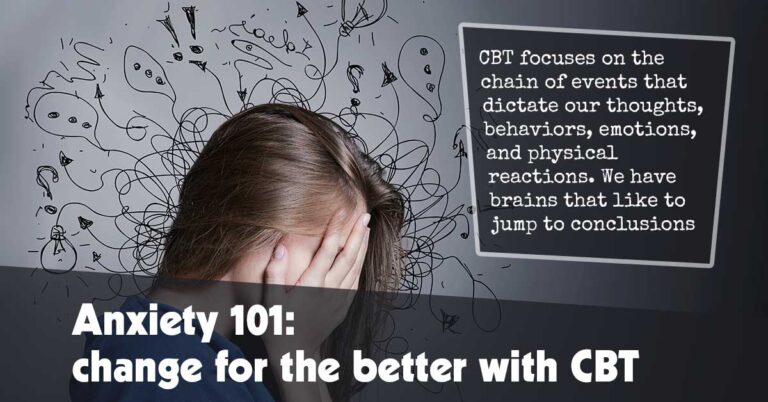Anxiety 101: Improving with Cognitive Behavioral Therapy
WHAT IS CBT?
Cognitive Behavioral Therapy (CBT), created by psychiatrist Aaron Beck and psychologist Albert Ellis in the 1950s, has long been considered the single most well-researched form of therapy. CBT remains relevant today, serving as our go-to solution for treating depression and anxiety while simultaneously managing anger, insomnia, low self-esteem and other matters of mental health. Our inaugural product relies heavily on this intervention method which we call The Anti-Anxiety Notebook1. CBT can also be beneficial when treating insomnia, anger management issues as well as issues regarding low self esteem as well.1
CBT addresses the interactions that dictate our thoughts, behaviors, emotions and physical reactions. Human brains tend to take shortcuts under stress which may produce unhelpful reactions that cascade down through thoughts and bodily responses in unison.
CBT illuminates what lies within our control through the “ABC” model, helping us recognize activating events, thoughts and consequences – each thought we choose to believe can determine meaning we accept, emotional responses we experience and body sensations; ultimately we direct our experiences by course-correcting as needed.
Over time, this loop turns into muscle memory. Time slows down; images still; words remain silent while associations are examined and challenged; there is a pause between impulse and action – an awareness of present moment; you make decisions to change behaviors accordingly.
HOW DOES CBT WORK? In CBT therapy, the goal is to detect and reframe perceptions in real time, monitoring automatic thoughts that arise without conscious awareness. Neuroplasticity demonstrates our brains can adapt; with practice and integration of information comes more defined pathways in your mind which leads to further growth2.
The Anti-Anxiety Notebook will guide you through 100 cognitive behavioral therapy-based journal entries for immediate and reflective support, offering structured exercises designed to relieve stress or give another viewpoint. Use it to believe in thoughts that improve your life, brain, mood and body.
Writing about an event requires describing its circumstances and your reactions – you do this by answering who, what, when and where questions.
Notify of Your Emotions. Naming our feelings can provide immense power. Take some time to identify all that you feel without questioning it too much.
Track the Intensity. Using a scale, rate the intensity of your emotions on a scale from barely feeling them to experiencing full-on emotions – such as selecting from 0-100%). Although quantifying feelings might seem strange at first, we encourage you to try whatever works for you or give this method a try and observe how your intensity fluctuates over time and any circumstances that improve or worsen it.
Discover patterns. By reading across entries, you may see similarities in your habits and processes – this could include patterns like “blaming others” or magnifying negative experiences. Keep in mind that training your brain to embrace new ways of thinking takes practice; take note of any thoughts that aren’t helping and their emotional reactions as part of this exercise.
Reframe Your Perspective. Take an objective, caring approach in approaching your thoughts and deciding how to think differently about a situation – this leads to effective actions being taken and maintaining healthy, balanced thinking patterns.
CBT IN PRACTICE: JOURNALING
We can use CBT to craft our experience and shape it according to what’s important for us. Perceptions influence how we perceive people and situations; our automatic thoughts and feelings lead us toward new insights and behaviors; fear centers can trigger alarm messages – giving us time to stop, notice, proceed with caution and reflect; instead of succumbing to fear-based impulses.
